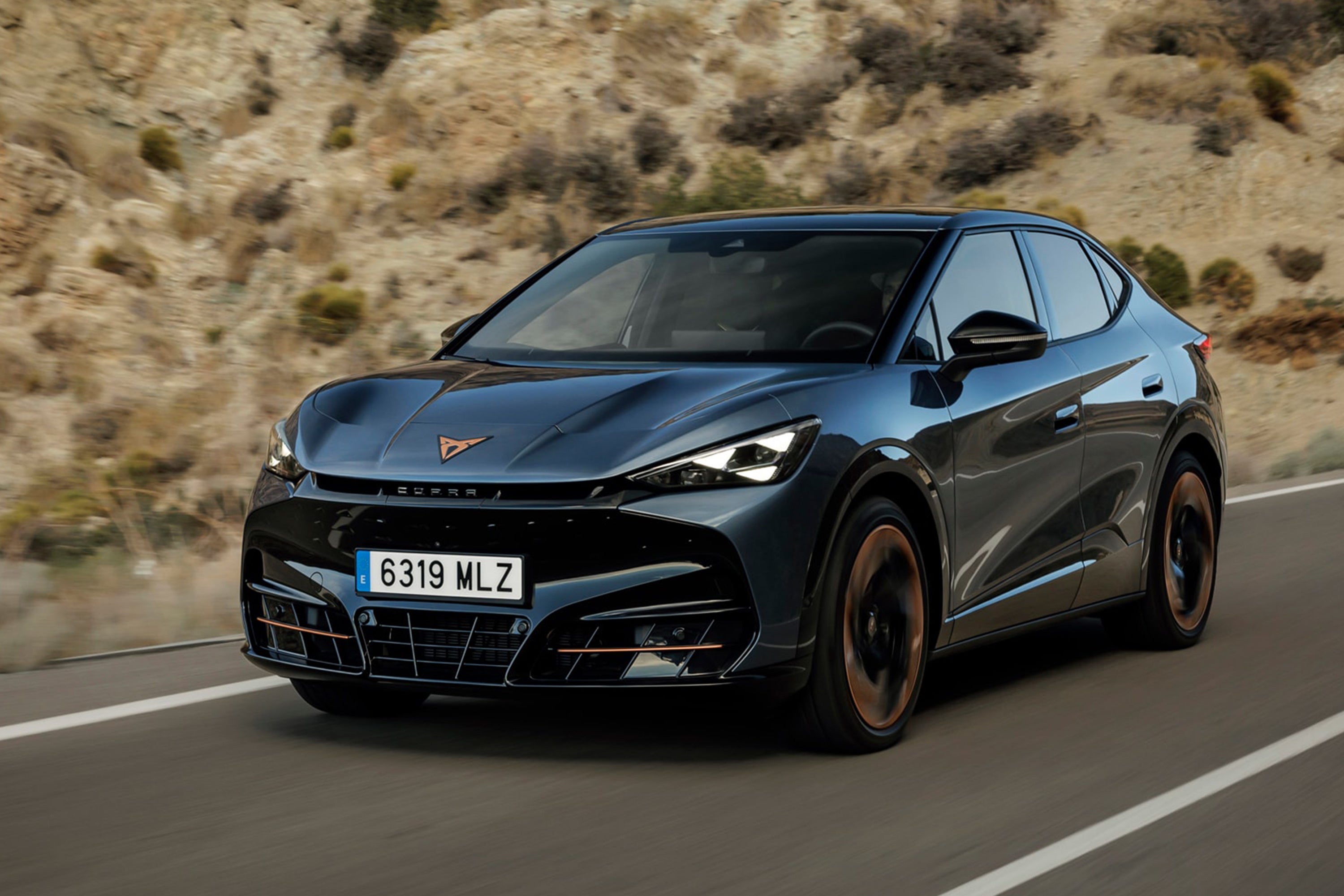Cupra Tavascan Review 2025: Price, specs & boot space
Written by Phill Tromans
Quick overview
Pros
- Striking design
- Spacious and well-equipped interior
- Good balance between comfort and handling
Cons
- Heavy weight affects agility
- Touch sensitive controls are fiddly
- Inconsistent braking
Is the Cupra Tavascan a good car?
"The Cupra Tavascan is a well-rounded electric SUV that brings a bold sense of style to this area of the market. It offers customers a well-tuned chassis, decent real-world battery range and a comfortable ride with a good edge of sportiness, as befits the Cupra brand."
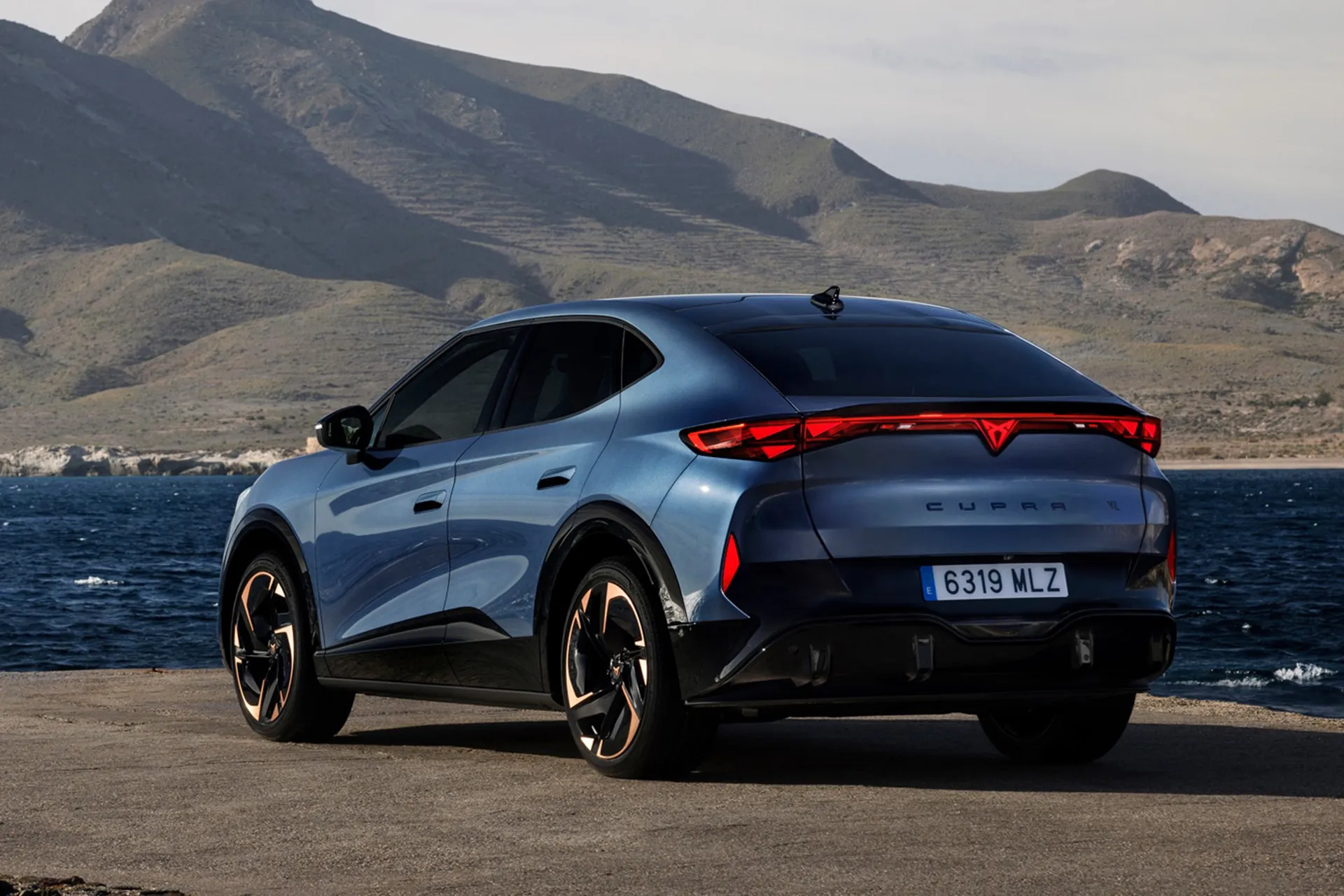
While it isn’t as sharp to drive as other cars bearing the Cupra badge, it strikes a good balance between comfort and fun that suits its position as a family car. The interior design is particularly striking, although the heavy reliance on touch-sensitive controls could get annoying for some drivers. Overall though, the Tavascan is a very compelling option for those looking at electric SUVs.
The introduction of the Tavascan in 2024 represented a big step for Cupra as an independent brand, spun off from parent company SEAT, and it moves further away from other Volkswagen Group cars with its unique design queues and sportier approach. Nevertheless, it shares its underpinnings with the Volkswagen ID.5 and the Audi Q4 E-tron,and sports a 77kWh battery with a choice of single-motor, rear-wheel-drive (RWD) or dual-motor, all-wheel-drive (AWD) setups.
Performance is solid, with the more powerful AWD VZ model making 340PS with a 0-62mph time of 5.5 seconds, while the RWD model offers 286PS and a still-respectable 6.8-second sprint to 62mph. The battery range is competitive, with up to 355 miles per charge in the RWD model and 326 miles in the AWD.
Is the Cupra Tavascan right for you?
Looking for an electric SUV that stands out, with a bold design and a tech-filled interior? Then the Tavascan could be what you’re after. It’s spacious and comfortable with a good mix of range and performance.
However, if maximum practicality is your goal then alternatives like the Skoda Enyaq Coupe or the Tesla Model Y might be better suited. The Tavascan’s heavy weight and an inconsistency in the braking response may also be factors if driving engagement is a top priority.
What’s the best Cupra Travascan model/powertrain to choose?
So far, we’ve tried the less powerful version of the Tavascan, with rear-wheel drive and a 286PS electric motor. For most people, this will be all you’ll need – it feels quick for a family SUV and will offer the best range of the two.
The AWD VZ model, with 340PS, will certainly up the excitement when you put your foot down, but at the cost of efficiency and… well, cost. It’ll be more money to buy and run, and it’s heavier too, which will surely affect the handling.
Given the balance of performance, efficiency, and price, the RWD model in V2 trim is likely the best all-rounder unless you have an unquenchable hankering for acceleration, or need AWD.
What other cars are similar to the Cupra Tavascan?
The Tavascan competes with the Volkswagen ID.5, the Audi Q4 Sportback E-Tron and the Skoda Enyaq Coupe, all of which share the same mechanical underpinnings (the MEB platform for all you engineering fans). Other key rivals include the Tesla Model Y, the Kia EV6, the Ford Mustang Mach-E and the Volvo EC40. For those looking at more premium alternatives, the BMW iX2 and the Lexus RZ will give you a more high-end experience… at a higher cost.
Comfort and design: Cupra Tavascan interior
"The Tavascan features a futuristic and premium cabin with plenty of tech, although some of the touch controls could be easier to use."
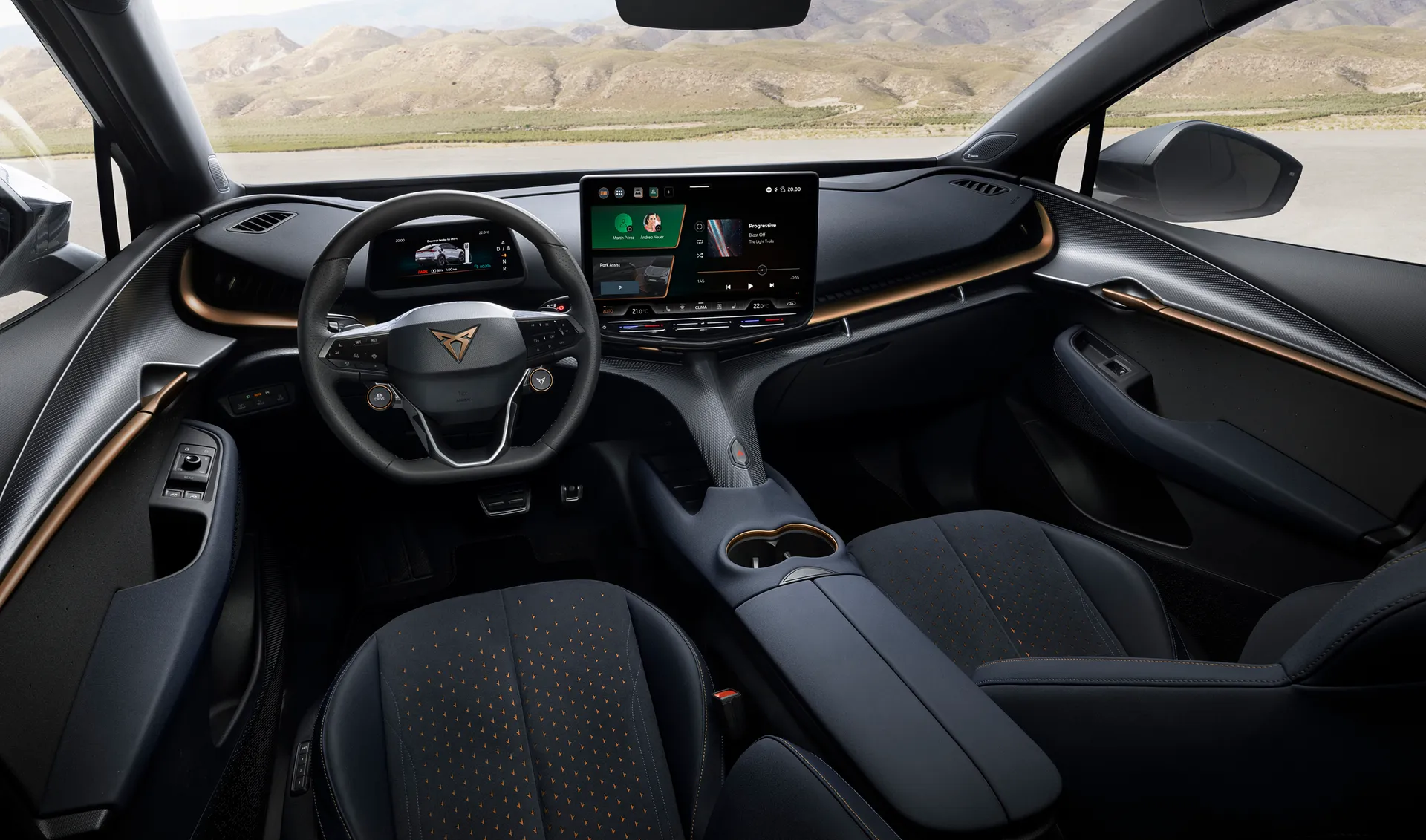
There aren’t many interiors quite like that of the Cupra Tavascan, which features a bold central spine that runs through the dashboard and looks almost like the protective halo you see on modern Formula 1 cars. This is on top of the suede-like upholstery, copper accents and the large 15-inch infotainment touchscreen that dominates the layout. Customisable ambient lighting seeps out of the dashboard and peppers the door cards. It’s really rather funky.
A smaller driver display sits behind the steering wheel and our test car had the optional augmented reality head-up display, which projects driving information onto the windscreen. It works well and saves you glancing down, away from the road ahead.
The front seats are well-bolstered and supportive, staying comfortable on longer journeys. There’s a high window line, which gives the cabin a sporty, cocooned feel, although this does restrict visibility somewhat – peering through the back window in the rear-view mirror is like peeking into a letter box, especially in the wet when the lack of rear windscreen wiper becomes annoying. Still, there’s a camera system and parking sensors that make manoeuvring no problem.
Rear passengers get decent legroom although taller passengers might find their hair messed up by the sloping roofline.
Quality and finish
The cabin materials in the Cupra Tavascan feel of high quality, with soft-touch surfaces and premium finishes throughout. The central divider, while visually distinctive, does reduce cabin storage space somewhat, although we’ll need to spend longer living with the car to determine just how annoying that is. Is it as premium feeling as an Audi Q4 Sportback E-Tron? No, but not much is, and the Cupra makes up for it in pizzazz.
Infotainment: Touchscreen, USB, nav and stereo in the Cupra Tavascan
A large 15-inch touchscreen sits atop the Tavascan’s dashboard. The display is sharp and responsive and runs Cupra’s generally easy-to-navigate software, as well as wireless Apple CarPlay and Android Auto on all models. It’s hassle-free.
A built-in navigation system with real-time traffic updates is included too. Generally, we’d suggest that using Google Maps, Waze or similar will be more effective, but the Cupra system can also do predictive route planning based on charging locations, which could be useful on longer journeys. We haven’t yet spent enough time with the car to properly try this out, but will update this review when we have.
Higher trims get an upgraded 12-speaker Sennheiser sound system, but even the standard audio setup is pretty decent. There are two USB-C charging ports in the front and two in the back, as well as a wireless charging pad in the centre console.
While generally, the tech setup is impressive, there are some weak points, most notably in the reliance on touch-sensitive controls. While the absence of traditional buttons lends a clean, modern look to the cabin, it’s harder to prod for functions on the move using the touchscreen. Even the steering wheel buttons are touch-sensitive and we found that they were too easy to activate accidentally just by brushing them when steering.
Space and practicality: Cupra Tavascan boot space
The Tavascan gives you 540 litres of boot space, which is pretty good for this kind of car and more than enough for most daily needs, whether it's carrying luggage, shopping bags, or sports kit. The boot has a wide opening and a low loading lip, which makes it easy to load and unload bulky items. A height-adjustable boot floor allows for additional flexibility (move it down for extra space, or up to level off the loading lip), and there’s a ski hatch for carrying longer items without needing to fold down the rear seats.
One downside is the absence of a front boot (frunk), a feature offered by some rivals, such as the Tesla Model Y. While this means less total storage space, the underfloor compartment in the rear boot does at least give you extra room for charging cables and smaller essentials.
Rear passenger space is generous, with plenty of legroom even for taller occupants. However, the sloping roofline does slightly compromise headroom, particularly for those over six feet tall. The rear bench is comfortable, and the flat floor improves middle-seat comfort, making it a viable option for carrying three passengers in the back.
In terms of cabin storage, the centre console features a deep storage bin under the armrest, and there are large door pockets that can hold water bottles and other essentials. There’s a pair of cup holders in the centre console, while rear passengers also get cup holders integrated into the fold-down armrest. The glove box is spacious enough for smaller items. Again, while the central dashboard spine boosts the cabin’s futuristic look, it does limit some of the storage potential typically available in EVs with open lower-console designs.
Handling and ride quality: What is the Cupra Tavascan like to drive?
"Since its inception, Cupra has set out to position itself as a sporty brand, with thrills to be found behind the wheel. Consequently, the Tavascan is one of the sportier electric SUVs to drive, with well-weighted steering and a confident stance."
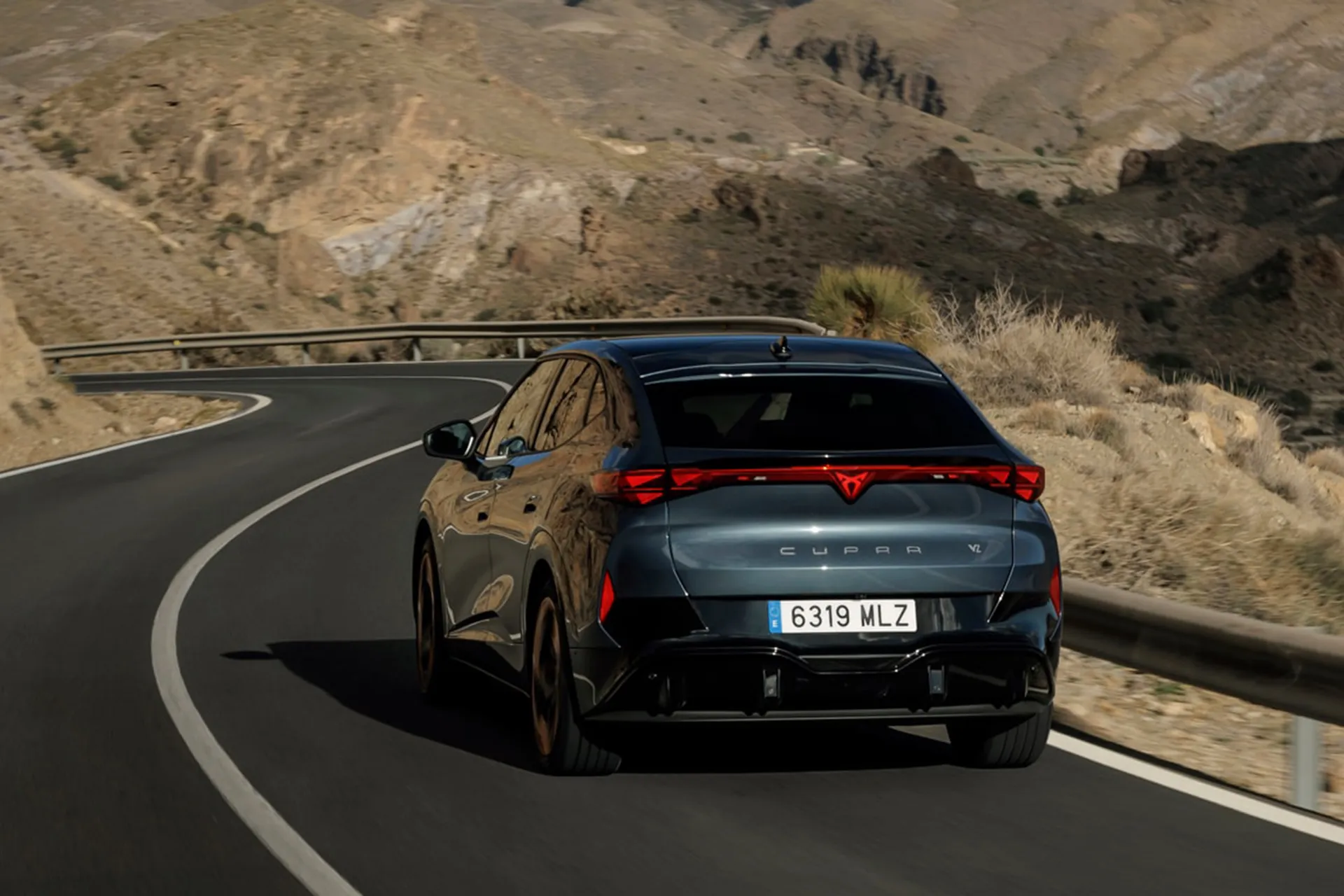
The adaptive suspension on our V2-trim test car helps balance comfort and handling, making it a solid cruiser. Only the V1 trim does without the adaptive suspension – it’s standard on V2, VZ2 and VZ2 cars.
The rear-wheel drive model is around 100kg lighter than the all-wheel drive variant, although still tips the scales at around 2.2 tonnes. That said, it feels pretty agile considering its heft. While we haven’t tried it yet, we suspect the AWD will feel quicker in a straight line thanks to its extra motor and more power, but may be less sharp through the corners because of its extra weight.
It offers a smooth ride, absorbing most road imperfections well, particularly in Comfort mode, while Sport mode firms things up for a more responsive feel. Despite its size, the Tavascan maintains composure on winding roads although it’s not quite as engaging as maybe you’d expect for a Cupra. It’s certainly not bad, but it lacks a certain level of sharpness that, in fairness, wouldn't normally be expected of a family SUV anyway.
While Cupra has done an excellent job tuning the chassis to contain body roll, it can’t quite match the agility of lighter performance SUVs like the Kia EV6 or Ford Mustang Mach-E. The weight is most noticeable in tighter corners, where the front-end push can be felt despite the well-calibrated electronic stability systems.
Braking response is another area of mixed results. The Tavascan employs a blend of regenerative and traditional friction braking, which, while efficient, feels inconsistent in practice even at lower speeds. At times, the car decelerates more sharply than expected when lifting off the accelerator, while at other moments, extra pedal pressure is required to achieve the desired stopping power. The brake pedal itself lacks the precision and progressive feel found in some rivals, making smooth stops a challenge, particularly in stop-and-go traffic. However, you can adjust regenerative braking levels via steering-wheel paddles, which helps tailor the experience to personal preference.
Ultimately, while not the sharpest SUV in the segment, the Tavascan strikes a balance between dynamic ability and everyday usability, making it a well-rounded choice if you value both comfort and a degree of driving engagement.
What motors and batteries are available in the Cupra Tavascan?
The Cupra Tavascan comes with two powertrain choices, both with a 77kWh battery pack. The rear-wheel-drive model produces 286PS, which gives it a 0-62mph time of 6.8 seconds. It offers the best range at up to 355 miles when fitted with smaller 19-inch wheels.
The all-wheel-drive version increases power to 340PS by adding a second motor at the front, delivering a 0-62mph time of 5.5 seconds. It has slightly reduced range, offering up to 326 miles.
The Tavascan supports DC fast charging at up to 135kW, meaning a 10-80% charge takes around 28 minutes, while AC charging is available at up to 11kW.
Cupra Tavascan range: How far can you travel on a charge?
You'll get the best battery range from the less powerful version of the Tavascan – up to 355 miles, Cupra says. The more powerful, heavier VZ versions will manage up to 326 miles, which is still pretty good compared to the opposition.
Refinement and noise levels
Road and wind noise are well suppressed, making the Tavascan a very decent choice for long journeys. The large wheels on higher trims can introduce some road noise, but overall, it’s one of the quieter electric SUVs at motorway speeds
Safety equipment: How safe is the Cupra Tavascan?
The Tavascan earned a full five-star rating from independent safety organisation Euro NCAP, with high scores for both adult and child occupant protection. Standard safety features include adaptive cruise control, lane-keeping assist, blind-spot monitoring, and automatic emergency braking.
Higher trims get predictive adaptive cruise control and a 360-degree parking camera.
Cupra Tavascan charging times: How much does it cost to charge?
"With a range of up to 355 miles (RWD) or 326 miles (AWD), the Cupra Tavascan is fairly efficient for an electric SUV."
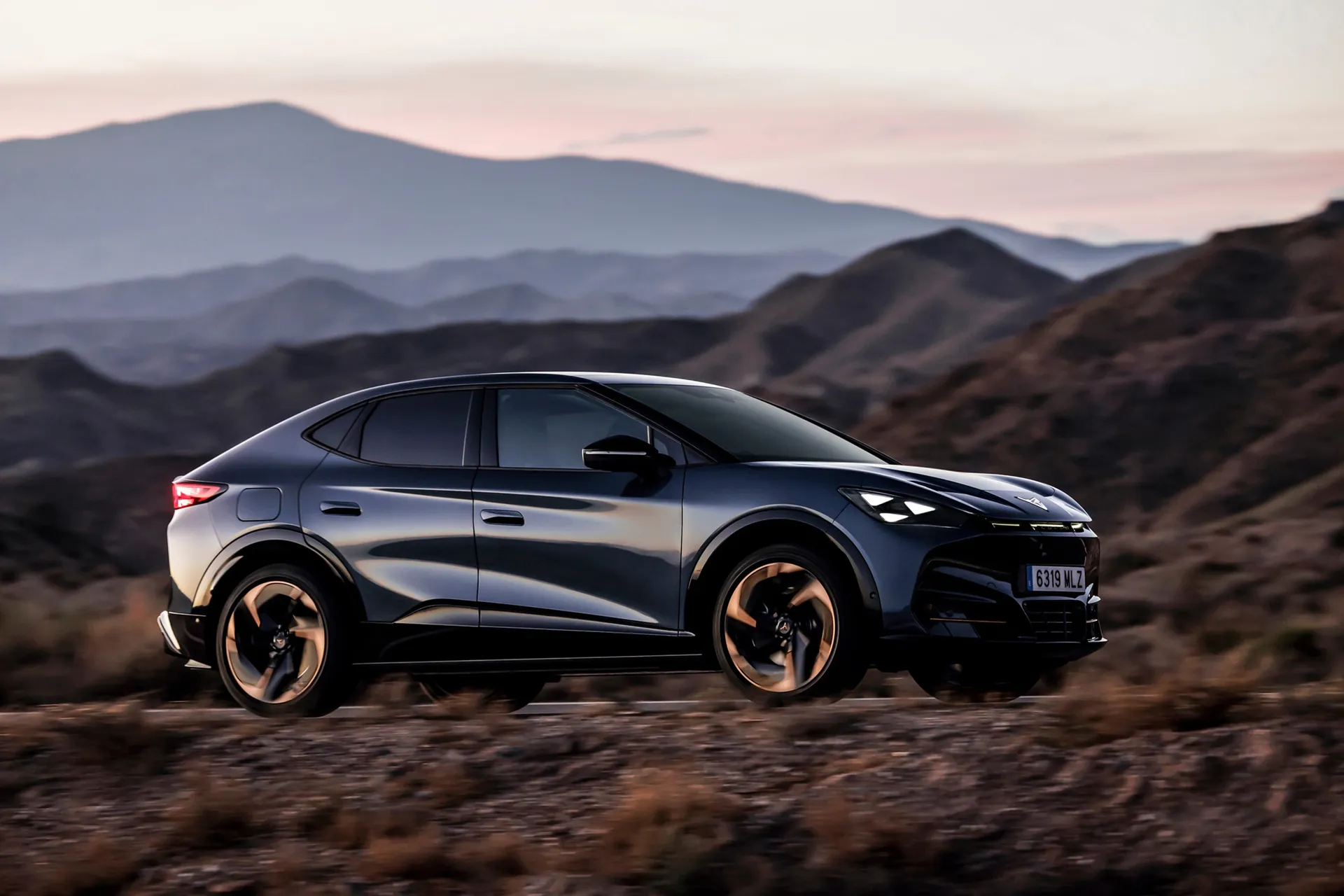
Charging speeds are decent, with a 135kW DC fast charge taking the battery from 10-80% in about 28 minutes. Home charging takes around 11 hours from a standard 7kW wall box.
Charging at home on a typical UK energy tariff would cost around £20 for a full charge. Using a rapid public charger (70p per kWh) increases the cost to about £54 for an 80% charge, making home charging the more economical choice if you're able.
Cupra Tavascan reliability and warranty
As the Tavascan is a new model, long-term reliability data isn’t yet available. However, it shares its MEB platform and electric powertrains with the Volkswagen ID.5, Skoda Enyaq Coupé, and Audi Q4 e-tron, which have shown solid reliability in early ownership.
Cupra as a brand ranked mid-table in recent reliability surveys, ahead of Volkswagen but slightly behind brands like Kia and Hyundai. One concern with MEB-based EVs has been occasional software glitches, but Cupra has improved its over-the-air update system to resolve issues more efficiently without needing to visit a dealer.
The Tavascan comes with a five-year/90,000-mile warranty, while the battery is covered for eight years/100,000 miles, ensuring it retains at least 70% of its original capacity.
Cupra Tavascan insurance groups and costs
Insurance groups for the Cupra Tavascan range from 34E to 39E, which could make it slightly more expensive to insure than some rivals.
VED car tax: What is the annual road tax on a Cupra Tavascan?
As a fully electric vehicle, the Cupra Tavascan is, at the time of writing, exempt from Vehicle Excise Duty (VED), commonly known as road tax. However, from April 2025, the UK government plans to introduce car tax for EVs. Under the proposed rules, the Tavascan will be taxed at the standard rate, which is currently £190 per year but could go up.
As all Tavascan models are priced above £40,000, they will also be subject to the luxury car tax surcharge, currently £390 per year, for five years after the first year of registration. This means that under the current rates, owners of new Tavascans registered after April 2025 will pay £580 per year in VED between years 2-6, after which the rate will drop to £190 annually.
Cupra Tavascan price
"Tavascan prices range from around £47,000 and cap out at over £60,000."
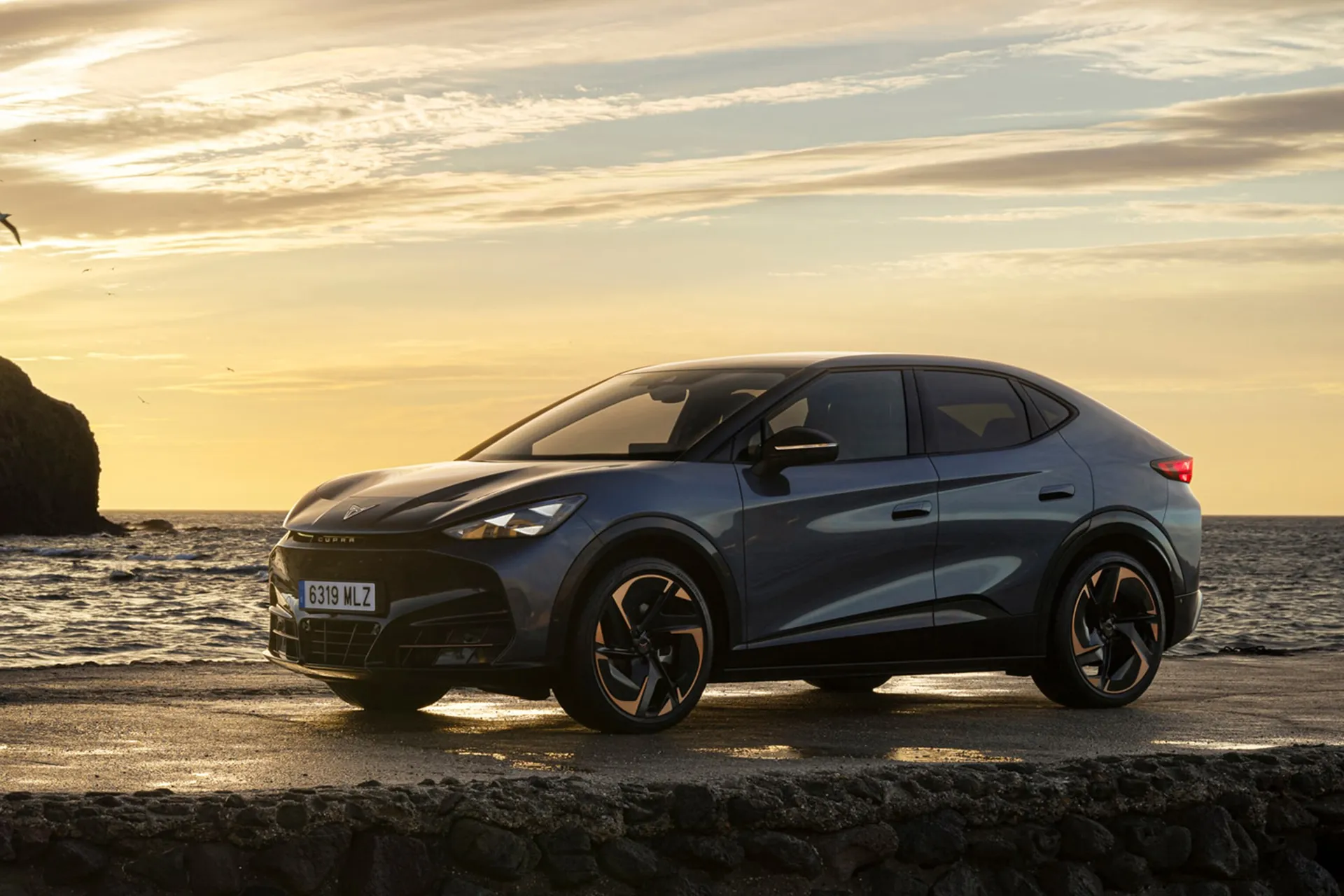
As the Cupra Tavascan is a new model, the used market is still in its infancy. Early used examples are expected to command strong residual values due to limited supply. A new Tavascan starts at £47,340 for the V1, £53,835 for the V2, £55,935 for the VZ1 and £60,835 for the VZ2.
As of early 2025, prices for nearly new models with low mileage start at around £45,000, depending on trim level and optional extras.
The Cupra Tavascan is projected to retain 48-51% of its value over three years or 36,000 miles, which is slightly lower than the Skoda Enyaq Coupé (53-57%) but competitive with the Volkswagen ID.5 and Tesla Model Y. Look for models with full service history and check for any software updates, as Cupra has been refining the infotainment and driver assistance systems via over-the-air updates.
Trim levels and standard equipment
The Cupra Tavascan is available in four trims – V1, V2, VZ1 and VZ2. However, the difference between V and VZ trims is primarily the powertrain – V trims are the RWD model, and VZs are the AWD version.
The V1 model rides on 19-inch alloy wheels and has bucket seats upholstered in cloth. Full LED headlights and a seven-speaker sound system are standard, as is a rear-view camera plus adaptive cruise control.
The Tavascan V2 has big 21-inch wheels and the seats are upholstered in “dark night” microfibre fabric. They’re heated and electrically adjustable. The headlights are matrix LED units that let you keep high beam on while keeping oncoming traffic in shadow, and there’s also a top-view camera system, an augmented reality head-up display that projects driving information onto the windscreen and a panoramic sunroof. You also get the upgraded Sennheiser sound system.
The VZ1 trim is essentially the same as the V2, but with the more powerful powertrain, while the top-spec VZ2 model has different alloy wheels, leather upholstery and upgraded front bucket seats.
Ask the heycar experts: common questions
How much does the Cupra Tavascan cost?
What is the range of the Cupra Tavascan?
What is the Cupra Tavascan based on?
Get our latest advice, news and offers
Keep me updated by email with the latest advice, news and offers from heycar.
By submitting you agree to our privacy policy
